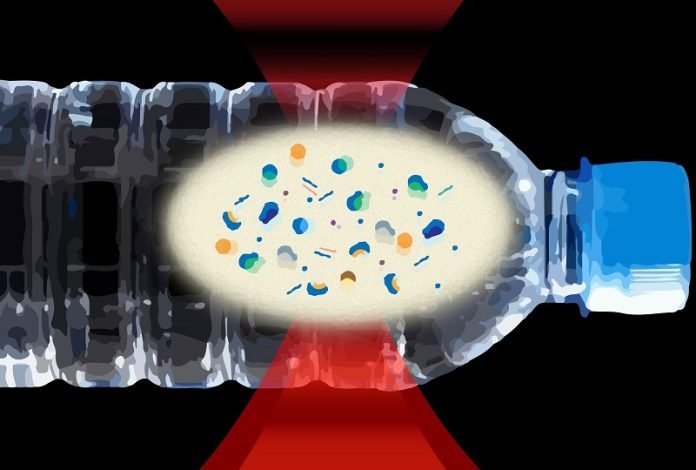
Have you ever thought about what’s in your bottled water besides water?
Scientists have just made a surprising discovery: bottled water contains hundreds of thousands of tiny plastic particles, much more than we ever knew before.
These tiny plastics, known as microplastics, are small pieces that come from bigger plastics breaking down. They’re everywhere – in the ocean, soil, and even in the air.
But now, researchers have found something even smaller and more concerning: nanoplastics.
These are like the children of microplastics, but so tiny they can enter our bloodstream and travel to different organs, including the heart and brain.
In a new study published in the journal Proceedings of the National Academy of Sciences, scientists used a special technology to count these nanoplastics in bottled water.
They were surprised to find about 240,000 of them in just one liter of water – that’s 10 to 100 times more than what we thought was in there!
Nanoplastics are so small, they’re measured in billionths of a meter. To put that in perspective, a human hair is about 70 micrometers wide, and these nanoplastics are much, much smaller.
This discovery is important because unlike natural materials, plastics don’t just disappear. They break into smaller pieces but stay as plastics. Microplastics are already known to be tiny – less than a quarter inch in size. But nanoplastics go even further into the realm of the invisible.
The researchers, including Beizhan Yan from Columbia University, used a method called stimulated Raman scattering microscopy to find these particles. This involves using lasers to make specific molecules stand out. They targeted seven common types of plastics and built a smart algorithm to sort out the results.
They tested three popular brands of bottled water in the United States (they didn’t say which brands) and found not just the quantity of these particles but also their types and shapes. Most of the particles were nanoplastics; some were microplastics. One common type they found was polyethylene terephthalate (PET), which is what many water bottles are made of. They think these particles might come off when the bottle is squeezed or exposed to heat.
But there was something even more surprising. The plastics they were looking for only made up about 10% of all the particles they found. That means there could be millions more that they haven’t identified yet.
This research is just the beginning. The team is now looking beyond bottled water to other areas, like tap water and even snow from Antarctica. They’re also working with health experts to understand how these tiny plastics might affect our bodies.
It’s a bit unsettling to think about all these invisible plastics around us, especially in something as essential as our drinking water. But this research is crucial for understanding the full extent of plastic pollution and how it might be affecting our health and the environment.



